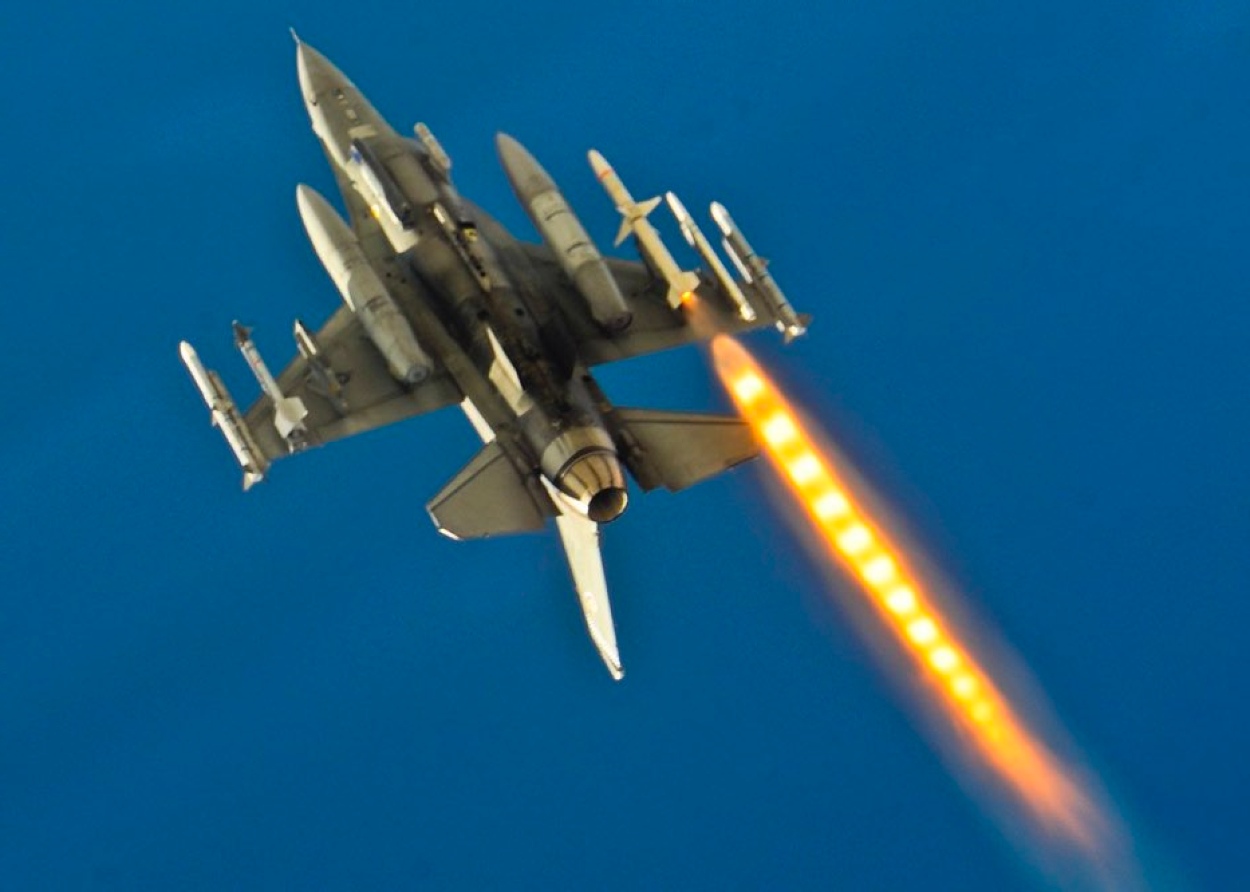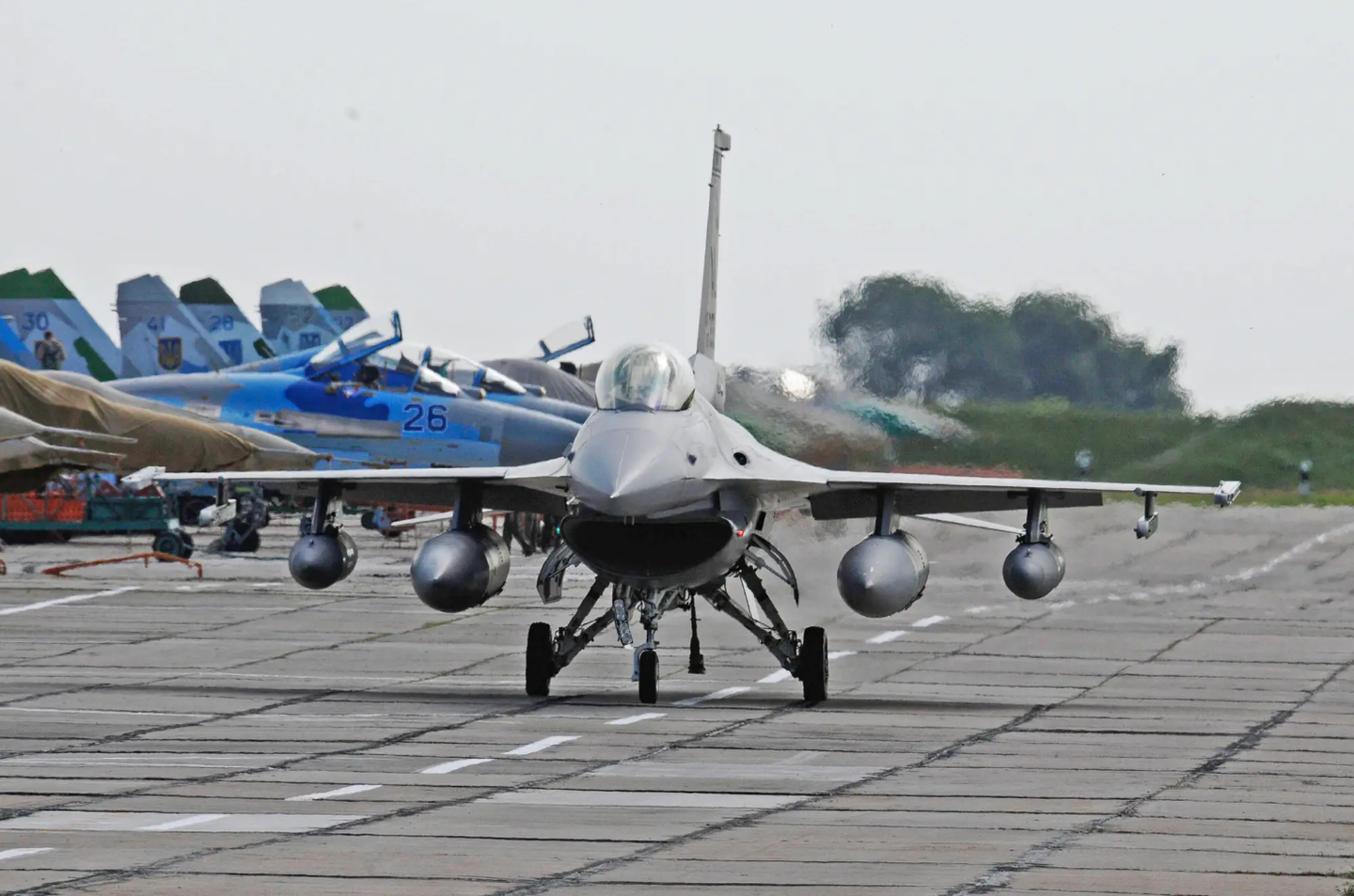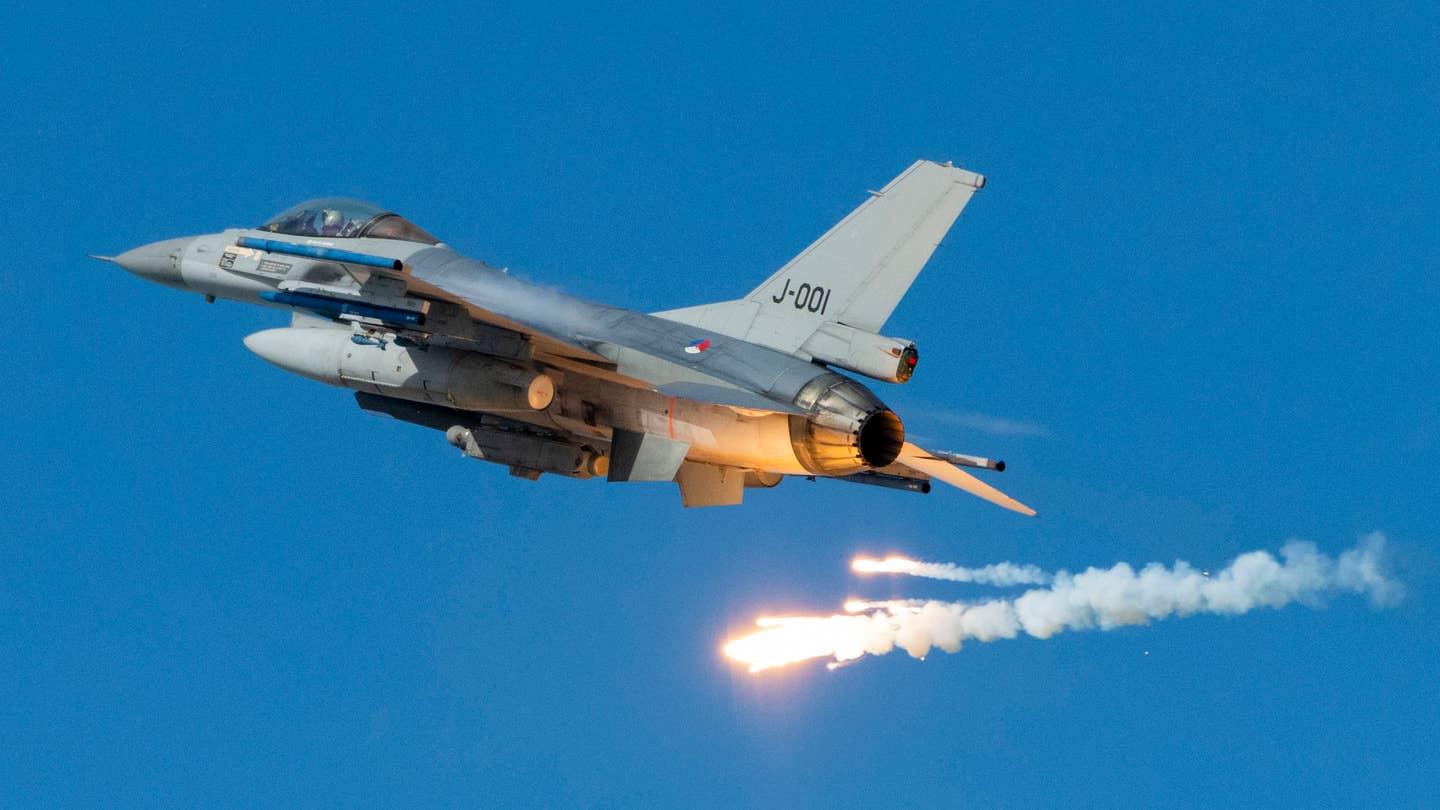In light of the growing momentum surrounding the transfer of F-16s to Ukraine, a senior Ukrainian official expressed confidence that these fighter jets, equipped with HARM (High-Speed Anti-Radiation Missile), could play a pivotal role in shifting the balance of power in the ongoing struggle against Russian air defense systems.
Plucky Ukraine ‘Retaliates’ After Unforgiving Russian Strikes With Kh-101 & Iskander-K Missiles; Remains Poised For Counteroffensive
Chief of Aviation of the Air Force Command of the Armed Forces of Ukraine, Brigadier General Serhii Holubtsov, said in an interview that using F-16 fighters will enhance the efficiency of HARM missiles against the Russian air defense systems.
According to the Ukrainian military officer, the recent acquisition of advanced weaponry has somewhat improved Ukraine’s operational effectiveness. In particular, including HARM anti-radar missiles has proven instrumental in challenging enemy air defense systems.
However, General Holubtsov stated that the full potential of the HARM missiles could be harnessed when paired with F-16 fighter jets.
The official added that the F-16s are equipped with a specialized receiver that provides pilots with crucial information regarding the enemy’s active air defense systems, including their precise location and orientation.
This advanced capability allows for highly targeted missile launches, significantly enhancing overall performance and effectiveness on the battlefield.
The commander noted the advantages the F-16s would bring to other advanced weapons, including “smart” bombs.
Holubtsov explained that these high-precision weapons must be programmed on the ground before deployment. However, with the induction of F-16s, this ground programming step could be bypassed entirely.
The fighter jets can detect targets while in flight and engage them promptly, eliminating the need for pre-programming. This streamlined process would result in increased operational efficiency for Ukraine’s military.
Furthermore, Holubtsov said this improvement extends to a wide range of high-precision weapons commonly employed by NATO pilots.
Unlike the traditional approach of programming weapons on the ground based on pre-assumptions, introducing F-16s in the Ukranian military would allow for real-time adaptation to the evolving combat situation.
Can F-16s Armed With HARM ‘Harm’ Russia?
As stated by the Ukrainian Air Force commander, the possible introduction of the F-16 into the Ukrainian air force brings significant advantages, particularly in the capability to deploy HARM missiles with optimal accuracy.
Experts believe this development also holds immense implications for Ukraine’s highly anticipated counteroffensive planned for this year.
Responding to months of persistent requests from Ukraine, the United States recently granted its approval to assist Kyiv in acquiring F-16 fighter jets to modernize its air force.
Amidst the buzz surrounding this momentous decision, numerous European nations have stepped forward, expressing their commitment to aiding Ukrainian pilots in mastering the intricacies of operating the Viper.

The Netherlands specifically indicated that it could donate some of its active and retired F-16s to Ukraine once the training of the Ukrainian pilots, which could last for three to four months, is concluded.
According to a previous article by Vijainder K Thakur, a former IAF Pilot, published in EurAsian Times, the F-16 fighters provided to Ukraine are expected to be the MLU (Mid-Life Upgrade) variants. These aircraft are being phased out of service by NATO allies like Norway, Denmark, and the Netherlands.
Despite their appearance of being older models, the F-16s designated for Ukraine under the MLU program are considered some of the more upgraded variants of this aircraft.
Under the Mid-Life Update (MLU) program, the F-16 jets underwent a series of updates to enhance their capabilities.
Speaking anonymously, a former United States Naval aviator told the EurAsian Times that “these aircraft would enable dynamic detection of enemy radars, facilitating real-time target identification and enabling the effective deployment of high-speed AGM-88 anti-radiation missiles (HARM).”
Notably, the capability of engaging targets whose locations were previously unknown before take-off presents a significant tactical shift in air operations.
The former naval pilot pointed out that deploying HARMs on MiG-29s necessitates pre-programming the target missile system’s coordinates before launch. This approach limits the missile’s capability to leverage its ability to track Russian radar signals fully.

In contrast, the F-16’s advanced computer systems and displays are designed to facilitate data exchange with the missile. Therefore, this real-time, in-flight targeting and mode selection capability will significantly enhance the effectiveness of the HARM, the former US military pilot concluded.
As highlighted by defense expert David Axe, incorporating the F-16 into Ukraine’s military operations brings a transformative shift in their air capabilities.
Utilizing the advanced radar receivers of the F-16 or utilizing a dedicated under-fuselage pod specifically designed to assist HARMs, pilots gain the ability to precisely pinpoint the location of Russian air-defense batteries just moments before launching the missile.
This tactical advantage leaves the batteries little time to react or reposition themselves effectively. Axe further emphasizes that with accurate HARM strikes, Ukrainian forces could finally effectively suppress Russian surface-to-air missile batteries across a significant stretch of the front line.
This would offer the Ukrainian air force and army freedom of movement in the airspace, which has been severely restricted throughout the ongoing conflict.
Furthermore, the implications of such enhanced air capabilities are profound. A potential Ukrainian offensive would enjoy good air support with the F-16s actively engaging HARMs and creating a safer sky.
This would also facilitate the swift and secure transportation of troops and supplies using helicopters, while attack jets could provide close air support to front-line battalions.
Overall, the accurate and effective air strikes unleashed by the F-16s would significantly bolster the Ukrainian forces’ overall operational capabilities, enabling them to execute a more decisive and successful offensive campaign.
Nevertheless, the extent to which these US-made aircraft armed with air-to-surface anti-radiation AGM-88 HARMs will genuinely offer an advantage to Ukrainian pilots remains doubtful.
This is due to the claims made by Russian forces asserting the successful neutralization of these missiles by their air defense system in the ongoing war.
Challenges Ahead
Meanwhile, Billie Flynn, a former 5th Gen Experimental Test Pilot, provided valuable insights to EurAsian Times regarding the challenges that Ukrainian pilots are likely to encounter.
According to Flynn, a highly experienced Pilot with 2000 hours across various F-16 models, the F-16 is a proficient 4th Gen multi-role jet capable of performing multiple tasks competently.
However, Flynn said that the F-16 would face challenges in surviving in the highly dangerous theater of Ukraine and may not possess the level of lethality required to significantly alter the outcome of the ongoing conflict.

Flynn noted that despite the determination of Ukrainian fighter pilots, it is unlikely that a newly converted aviator trained in Eastern Bloc methods would possess the necessary skills to effectively navigate the challenges of flying, engaging in combat, and ensuring survival in the demanding airspace over Ukraine.
The former test pilot further emphasized that while it is feasible to train pilots to operate the F-16 safely, developing the expertise required to effectively employ the jet’s full combat capabilities is much more complex.
He added that becoming a highly skilled fighter pilot takes time and experience, typically spanning ten years.
Simply transitioning from flying MiG-29s and Su-27s to the F-16 does not guarantee that the pilots will readily master the advanced sensors and capabilities inherent in the F-16.
- Contact the author at ashishmichel(at)gmail.com
- Article republished with some changes
- Follow EurAsian Times on Google News





